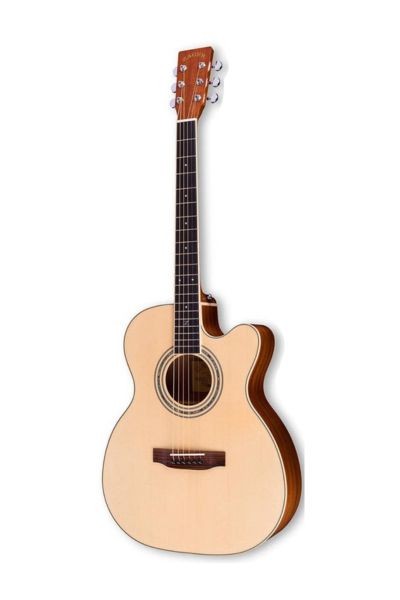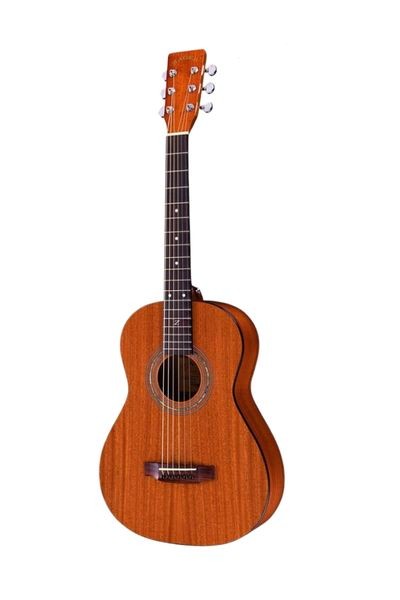Learning electric guitar, with its cool riffs and electrifying potential, is a rewarding journey, and at LEARNS.EDU.VN, we understand you’re eager to shred. The timeline varies based on dedication, practice habits, and natural aptitude, but with the right approach and resources, you can make significant progress faster than you think. Dive into the world of guitar playing, music theory, and guitar lessons to unlock your musical potential.
1. Understanding the Timeline for Learning Electric Guitar
The journey of learning electric guitar is a marathon, not a sprint. It’s essential to understand the typical timeline to set realistic expectations and stay motivated. Each stage builds upon the previous one, and consistent practice is the key to progressing smoothly.
Here’s a general overview of what you can expect at different stages:
| Skill Level | Timeframe | Focus Areas | Expected Outcomes |
|---|---|---|---|
| Beginner | 1-6 months | Holding the guitar correctly, basic chords (E, A, D, G, C), strumming patterns, tuning, single-note melodies, music theory basics | Comfortable holding and playing the guitar, able to play simple songs with basic chords, understand basic music theory concepts, tune the guitar |
| Intermediate | 1-2 years | Barre chords, scales (pentatonic, major, minor), alternate picking, vibrato, bends, hammer-ons, pull-offs, playing simple riffs and solos, learning different musical genres | Play more complex songs, create simple solos, understand chord progressions, play in different keys, develop your personal playing style |
| Advanced | 2-5 years | Advanced scales and chords, complex rhythms, improvisation, writing original music, playing in different styles (blues, rock, jazz, metal), ear training | Play complex songs with ease, improvise confidently in various musical styles, write original music, understand advanced music theory concepts, play by ear, potentially perform professionally |
| Expert | 5+ years | Mastering advanced techniques, developing a unique style, teaching, performing professionally, constantly learning and expanding musical knowledge | Play at a professional level, develop a unique and recognizable style, teach others, perform in various settings, become a true master of the electric guitar |



1.1. Factors Affecting the Learning Curve
Several factors can influence how quickly you progress in your electric guitar journey. Being aware of these can help you tailor your approach and optimize your learning experience.
- Practice Consistency: Regular, focused practice is the most important factor. Even short, daily sessions are more effective than sporadic, long ones.
- Natural Aptitude: Some people naturally grasp musical concepts and techniques more quickly than others.
- Learning Resources: High-quality resources, such as experienced teachers, online courses, and well-structured learning materials, can significantly accelerate your progress. LEARNS.EDU.VN offers a wealth of resources to support your learning journey.
- Musical Background: Prior musical experience, even on a different instrument, can provide a foundation of knowledge and skills that make learning the electric guitar easier.
- Motivation and Goals: Having clear goals and a strong desire to learn will keep you motivated and focused, even when facing challenges.
- Practice Methods: Intelligent training is essential because depending on the individual, it will take longer for certain people and less for others.
- Age Age is just a number in the learning process.
2. Key Skills to Master as a Beginner
Starting with the right foundation is crucial for long-term success. These are some fundamental skills to focus on in your first few months of learning:
2.1. Proper Guitar Handling and Posture
Holding the guitar correctly is essential for comfort, preventing injuries, and playing efficiently. Sit or stand with good posture, keeping your back straight and shoulders relaxed. Position the guitar so that you can reach the fretboard and strings comfortably.
2.2. Tuning the Guitar
Learning to tune your guitar is one of the most important first steps. Use a digital tuner or a tuning app to ensure that your guitar is in tune before each practice session. Familiarize yourself with the names of the strings and their corresponding notes (E, A, D, G, B, E).
2.3. Basic Chords
Mastering basic open chords like E, A, D, G, C, and D is essential for playing a wide variety of songs. Practice transitioning between these chords smoothly and accurately.
2.4. Strumming Techniques
Develop a consistent strumming pattern using downstrokes and upstrokes. Use a metronome to improve your timing and rhythm.
2.5. Finger Exercises
Strengthen your fingers and improve dexterity with simple finger exercises. These exercises will help you develop the coordination and strength needed to play more complex chords and melodies.
3. Intermediate Skills: Taking Your Playing to the Next Level
Once you’ve mastered the basics, it’s time to expand your skills and explore more advanced techniques.
3.1. Barre Chords
Barre chords allow you to play chords in any key across the fretboard. Mastering barre chords will significantly expand your chord vocabulary and open up new musical possibilities.
3.2. Scales and Modes
Learning scales and modes will help you understand the relationships between notes and chords, and will enable you to improvise and create your own solos. Start with the pentatonic scale and then move on to major and minor scales.
3.3. Alternate Picking
Alternate picking involves using both downstrokes and upstrokes when picking individual notes. This technique will help you play faster and more efficiently.
3.4. Bending and Vibrato
Bending and vibrato are expressive techniques that add emotion and character to your playing. Practice bending strings accurately and applying vibrato to sustain notes.
3.5. Learning Songs and Riffs
Apply your skills by learning songs and riffs that you enjoy. This will help you develop your technique and musicality, and will keep you motivated to continue learning.
4. Advanced Techniques for Experienced Players
If you’re dedicated to mastering the electric guitar, you’ll eventually want to explore advanced techniques that will elevate your playing to a professional level.
4.1. Sweep Picking
Sweep picking is a technique that involves picking multiple notes in a single, fluid motion. This technique is often used in metal and shred guitar playing.
4.2. Tapping
Tapping involves using your fingers to strike the strings directly on the fretboard, creating unique and complex sounds.
4.3. Hybrid Picking
Hybrid picking combines the use of a pick and your fingers to pluck the strings. This technique allows you to play complex arpeggios and create interesting rhythmic patterns.
4.4. Advanced Improvisation
Advanced improvisation involves using your knowledge of scales, chords, and music theory to create spontaneous and expressive solos.
4.5. Songwriting and Composition
Songwriting and composition involve creating your own original music. This is the ultimate expression of your musical creativity and will allow you to share your unique voice with the world.
5. Optimizing Your Practice Routine
Effective practice is key to making consistent progress. Here are some tips for optimizing your practice routine:
- Set Specific Goals: Define what you want to achieve in each practice session.
- Focus on Fundamentals: Spend time on basic techniques to build a solid foundation.
- Use a Metronome: Improve your timing and rhythm by practicing with a metronome.
- Record Yourself: Listen back to your playing to identify areas for improvement.
- Practice Slowly: Start slowly and gradually increase the tempo as you improve.
- Take Breaks: Avoid burnout by taking short breaks during your practice sessions.
- Stay Consistent: Practice regularly, even if it’s just for a short amount of time each day.
6. Choosing the Right Equipment
Having the right equipment can make a significant difference in your learning experience. Here are some essential items to consider:
6.1. Electric Guitar
Choose an electric guitar that is comfortable to play and suits your musical style. Beginner-friendly guitars often have thinner necks and lighter strings, making them easier to play. Consider brands like Yamaha, Ibanez, and Squier.
6.2. Amplifier
An amplifier is essential for hearing the sound of your electric guitar. Choose an amplifier that is appropriate for your practice space and playing style. Small practice amplifiers are ideal for beginners.
6.3. Accessories
Other essential accessories include a guitar cable, picks, a guitar strap, a tuner, and a guitar case.
7. The Role of Music Theory
Understanding music theory can greatly enhance your guitar playing. Music theory provides a framework for understanding how music works, and it can help you learn chords, scales, and improvisation more effectively.
7.1. Basic Concepts
Start with basic concepts like notes, intervals, scales, chords, and key signatures.
7.2. Chord Progressions
Learn how to analyze and create chord progressions. Understanding chord progressions will help you write your own songs and improvise over existing ones.
7.3. Harmony and Melody
Explore the relationship between harmony and melody. Understanding how these elements work together will help you create more expressive and engaging music.
8. Finding the Right Learning Resources
There are many resources available to help you learn electric guitar. Here are some options to consider:
8.1. Guitar Teachers
A qualified guitar teacher can provide personalized instruction and guidance. Look for a teacher who has experience teaching beginners and who understands your musical goals.
8.2. Online Courses
Online courses offer a structured learning experience with video lessons, exercises, and feedback. LEARNS.EDU.VN offers a variety of online courses to suit different skill levels and learning styles.
8.3. YouTube Channels
YouTube is a great resource for free guitar lessons and tutorials. Look for channels that offer clear and concise instruction.
8.4. Books and Websites
Many books and websites offer guitar lessons, chord charts, and tablature. Choose resources that are appropriate for your skill level and learning style.
9. Overcoming Common Challenges
Learning electric guitar can be challenging, but with persistence and the right strategies, you can overcome common obstacles.
9.1. Finger Pain and Soreness
- Challenge: Developing calluses on your fingertips takes time and can be uncomfortable.
- Solution: Practice regularly in short sessions to build calluses gradually. Use lighter gauge strings initially.
9.2. Frustration with Progress
- Challenge: Progress isn’t always linear. Some days you might feel like you’re not improving.
- Solution: Set realistic goals, celebrate small victories, and remember why you started learning in the first place.
9.3. Lack of Motivation
- Challenge: Maintaining motivation can be tough, especially when facing challenges.
- Solution: Set short and achievable goals.
9.4. Developing Bad Habits
- Challenge: Pay attention to the posture and techniques of experienced guitarists to avoid developing bad habits.
- Solution: Utilize online resources like YouTube and Songsterr.
10. Tips to Accelerate Your Learning
While there’s no magic shortcut, here are effective strategies to speed up your progress:
10.1. Immerse Yourself in Music
- Tip: Listen actively to various genres, focusing on guitar parts. Analyze techniques and try to replicate them.
10.2. Play with Others
- Tip: Jamming with other musicians can significantly improve your timing, improvisation, and overall musicality.
10.3. Set Performance Goals
- Tip: Prepare to perform a song at an open mic night or for friends. Having a specific performance goal can motivate you to practice more effectively.
10.4. Seek Feedback
- Tip: Ask experienced guitarists or teachers for feedback on your playing. Constructive criticism can help you identify areas for improvement.
10.5. Break Down Complex Tasks
- Tip: If you’re struggling with a difficult passage, break it down into smaller, manageable chunks. Practice each chunk separately and then gradually combine them.
11. Staying Motivated and Inspired
Maintaining motivation is crucial for long-term success. Here are some tips for staying motivated and inspired:
- Set Realistic Goals: Set achievable goals and celebrate your progress along the way.
- Find a Community: Connect with other guitar players online or in person.
- Attend Concerts: Seeing live music can inspire you and give you new ideas.
- Learn Your Favorite Songs: Playing songs you love will keep you motivated and engaged.
- Take Breaks: Avoid burnout by taking breaks when you need them.
- Remember Why You Started: Remind yourself of your original goals and motivations.
12. Choosing the Right Electric Guitar
Selecting the right electric guitar is pivotal for a comfortable and enjoyable learning experience. Here’s a guide to help you choose:
12.1. Body Style
- Solid Body: Common for rock, metal, and blues. Offers sustain and minimizes feedback.
- Hollow Body: Favored in jazz and blues for warm tones.
- Semi-Hollow Body: Versatile, offering sustain with a touch of airiness.
12.2. Pickup Type
- Single-Coil: Bright, clear sound, popular in country, blues, and rock.
- Humbucker: Thicker, warmer tone, preferred in rock and metal.
12.3. Scale Length
- Shorter Scale: Easier for smaller hands, often found in beginner guitars.
- Longer Scale: Offers a tighter, brighter tone.
12.4. Budget
- Beginner: $200 – $500. Focus on playability and durability.
- Intermediate: $500 – $1000. Expect better components and sound quality.
- Advanced: $1000+. Professional-grade instruments with top-tier features.
13. Exploring Different Genres
One of the joys of learning the electric guitar is the ability to explore various musical genres. Each genre offers unique techniques and styles to learn.
13.1. Rock
- Techniques: Power chords, riffs, solos, bending, vibrato.
- Artists: Jimi Hendrix, Eric Clapton, Jimmy Page.
13.2. Blues
- Techniques: Pentatonic scales, blues scales, slide guitar, fingerpicking.
- Artists: B.B. King, Stevie Ray Vaughan, Robert Johnson.
13.3. Jazz
- Techniques: Chord melody, improvisation, complex chords, walking bass lines.
- Artists: Joe Pass, Wes Montgomery, Charlie Christian.
13.4. Metal
- Techniques: Sweep picking, tapping, alternate picking, shredding, palm muting.
- Artists: Yngwie Malmsteen, Randy Rhoads, Eddie Van Halen.
14. Using Technology to Enhance Learning
Technology offers powerful tools to support your guitar learning journey.
14.1. Guitar Learning Apps
- Features: Interactive lessons, chord diagrams, tuner, metronome.
- Examples: Yousician, GuitarTricks, Fender Play.
14.2. Digital Audio Workstations (DAWs)
- Features: Recording, editing, mixing, and mastering capabilities.
- Examples: GarageBand, Ableton Live, Logic Pro.
14.3. Amp Modeling Software
- Features: Emulates various amplifiers and effects pedals.
- Examples: BIAS Amp, Positive Grid, AmpliTube.
15. The Benefits of Playing Electric Guitar
Beyond the joy of making music, playing the electric guitar offers numerous benefits.
15.1. Cognitive Skills
- Benefit: Improves memory, concentration, and problem-solving abilities.
15.2. Stress Relief
- Benefit: Playing music can reduce stress and anxiety, promoting relaxation.
15.3. Creativity
- Benefit: Fosters creativity and self-expression.
15.4. Social Connections
- Benefit: Provides opportunities to connect with other musicians and build friendships.
15.5. Self-Esteem
- Benefit: Achieving musical goals can boost self-esteem and confidence.
16. Essential Maintenance Tips for Your Electric Guitar
Keeping your electric guitar in top condition is essential for optimal performance and longevity.
16.1. Cleaning
- Tip: Wipe down the body and neck after each use with a soft cloth. Use guitar polish occasionally to remove dirt and grime.
16.2. String Changes
- Tip: Replace strings every 1-3 months, depending on usage. New strings improve tone and playability.
16.3. Fretboard Care
- Tip: Clean and condition the fretboard with lemon oil or fretboard conditioner every few months to prevent dryness and cracking.
16.4. Setup
- Tip: Have your guitar professionally set up by a qualified technician every year. A proper setup ensures optimal playability and intonation.
16.5. Storage
- Tip: Store your guitar in a case when not in use to protect it from dust, humidity, and temperature changes.
17. Common Myths About Learning Guitar
Let’s debunk some common misconceptions about learning the guitar.
17.1. You Need to Have Natural Talent
- Myth: Natural talent can help, but consistent practice and dedication are more important.
17.2. You Need to Start Young
- Myth: People of any age can learn to play the guitar.
17.3. You Need to Learn Music Theory First
- Myth: While music theory is helpful, you can start playing songs without knowing much theory.
17.4. You Need to Practice for Hours Every Day
- Myth: Short, focused practice sessions are more effective than long, unfocused ones.
17.5. You Need an Expensive Guitar to Learn
- Myth: You can learn to play on an affordable guitar. As you improve, you can upgrade to a better instrument.
18. How LEARNS.EDU.VN Can Help You Learn Electric Guitar
At LEARNS.EDU.VN, we are committed to providing you with the resources and support you need to succeed in your electric guitar journey.
18.1. Online Courses
- Benefit: Structured lessons for all skill levels, taught by experienced instructors.
18.2. Personalized Learning Plans
- Benefit: Tailored learning plans to match your goals and learning style.
18.3. Community Forum
- Benefit: Connect with other guitar players, share tips, and ask questions.
18.4. Expert Advice
- Benefit: Access to expert advice from experienced guitar teachers and musicians.
19. Level Up Your Playing Techniques
Start tackling more complex chords and begin improvisational playing:
19.1. Barre Chords:
Barre chords help you play chords in any key across the fretboard. Once you get a hold of it, you will be able to figure out any chords once you identify the root note.
19.2.Improvise with backing tracks:
Start improvising with the scales you know over simple backing tracks.
20. Follow These Tips to Speed Up The Learning Process
When learning how to play the guitar you can utilize an endless number of resources to speed up the process.
20.1. Utilize Online Resources:
There are many online resources you can utilize like YouTube and Songsterr. They have guitar tabs and playback features that you can use to practice and learn.
20.2. Begin with Basics:
As a beginner, you do not need the most expensive equipment. Save money on a budget acoustic guitar. Use free apps like Guitar Tuna or Pano Tuner instead or buy expensive tuners.
21. Check Out These Reddit Threads For Guitar Learning Processes
- r/Guitar
- r/Guitarlessons
- r/AcousticGuitar
Frequently Asked Questions
How Long Does Learning Electric Guitar Take?
On average, you can start playing basic songs within a few months to a year of consistent practice. However, mastering advanced techniques and becoming proficient can take several years of dedicated effort.
Is It Okay To Learn Electric Guitar First?
Yes, it is perfectly fine to start with electric guitar. The lighter strings and often narrower necks can make it easier on the fingers for beginners.
How Much Practice Is Required To Learn Guitar?
Consistency is key. Aim for at least 30 minutes to an hour of focused practice each day. Short, regular sessions are often more effective than long, infrequent ones.
What Are the Most Important Things To Learn First on Electric Guitar?
Focus on the fundamentals: proper posture, basic chords, strumming patterns, tuning, and simple scales.
Can I Learn Guitar By Myself?
Yes, many people successfully learn guitar on their own using online resources, books, and apps. However, having a teacher can provide personalized guidance and feedback.
What Are Some Common Challenges When Learning Electric Guitar?
Finger pain, frustration with progress, developing bad habits, and maintaining motivation are common challenges.
How Do I Choose the Right Electric Guitar for a Beginner?
Look for a guitar with a comfortable neck, good action (string height), and a versatile sound. Beginner-friendly brands include Yamaha, Squier, and Ibanez.
What Accessories Do I Need To Start Playing Electric Guitar?
Essential accessories include an amplifier, a guitar cable, picks, a tuner, and a guitar strap.
How Important Is Music Theory for Learning Electric Guitar?
While not essential at first, understanding basic music theory can significantly enhance your playing and improvisation skills.
Where Can I Find Reliable Resources for Learning Electric Guitar?
LEARNS.EDU.VN, online guitar courses, YouTube channels, guitar teachers, and books are all valuable resources.
Take Your Time With Learning Electric Guitar!
Learning electric guitar is a journey filled with challenges and rewards. By understanding the typical timeline, focusing on fundamental skills, optimizing your practice routine, and utilizing the right resources, you can achieve your musical goals and unlock your full potential. Remember to stay motivated, be patient with yourself, and enjoy the process.
Ready to start your electric guitar journey? Visit LEARNS.EDU.VN today to explore our online courses, connect with other guitar players, and access expert advice. Our team of experienced instructors is dedicated to helping you achieve your musical dreams. Contact us at 123 Education Way, Learnville, CA 90210, United States, or call us on Whatsapp at +1 555-555-1212. Let learns.edu.vn be your partner in mastering the electric guitar!
